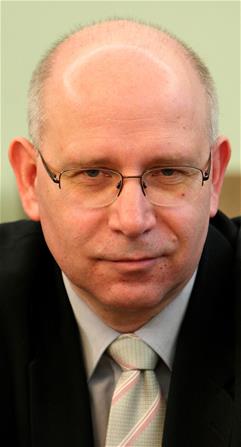
Banner

Ghetto in German-occupied Poland, please!
ANT KATZ
The original story, which had a somewhat shorter headline on JR Online, “Survivor is world’s oldest, celebrates barmitzvah” – was picked up by the complainant who wrote to SAJR saying: “We were deeply concerned to note that the article “Survivor is world’s oldest, celebrates barmitzvah” published on your website on September 15, 2016 contains the phrase “POLISH GHETTO” to refer to a JEWISH GHETTO IN GERMAN-OCCUPIED POLAND.
“Such phrases are libellous, harmful to the good name of Poland, and historically false,” wrote Świrski.
 While Świrski is, technically correct – and JR Online commends the efforts of his organisation to correct the errors of the past – the byline on the original story is that of a Jewish news wire service JTA (Jewish Telegraphic Agency), to which the South African Jewish Report subscribes and which we have informed Mr Świrski – who had, no doubt, already addressed his letter as well.
While Świrski is, technically correct – and JR Online commends the efforts of his organisation to correct the errors of the past – the byline on the original story is that of a Jewish news wire service JTA (Jewish Telegraphic Agency), to which the South African Jewish Report subscribes and which we have informed Mr Świrski – who had, no doubt, already addressed his letter as well.
Jewish Report Online will endeavour to try and watch for any future content that similarly refers to geographically correct but politically incorrect positioning of Nazi Germany’s ghettos, death camps, etc. by qualifying them in this manner.
League Against Defamation continues…
The remainder of the letter from Chairman Świrski is published verbatim:
The Jewish ghettos were established during WW2 by the German Reich. Their general, euphemistic name given to them by the Germans was “Jüddischer Wohnbezirk” (Jewish residential district). Neither this name, however, nor the phrase “Polish ghetto” have any historical basis. The most accurate names are those given by the German occupiers and used during the time of the ghetto. For instance, the ghetto set up by Germans in Łódź should be referred to as “Litzmannstadt Ghetto”. The correct name for each ghetto can be easily found in many studies on this topic, available online. Should you have any questions or doubts, we are more than willing to help.
 Just as there were no “Polish death camps” during World War 2, “Polish ghetto” is a misnomer as well. The ghettos in which the German occupiers forcefully detained the Jewish population were set up on Polish soil because the pre-War Poland was Europe’s largest Jewish Diaspora. There are no reasonable grounds to use the phrase “Polish ghetto”. Even if considered a sort of verbal shortcut, it is very misleading, as neither the population of the ghettos, nor their creators, were of Polish nationality. While we could find some Polish citizens (of Jewish origin) among them, they were confined within the ghetto walls because of their Jewish roots, not because of their citizenship. But that is not all. Poland did not exist as an independent state during World War 2, as some of its territory had been annexed to Germany, and the remaining part came under the so-called General Government, an administrative entity completely subject to the German Reich. Therefore, the adjective “Polish” used with reference to WW2 Jewish ghettos is absolutely unfounded.
Just as there were no “Polish death camps” during World War 2, “Polish ghetto” is a misnomer as well. The ghettos in which the German occupiers forcefully detained the Jewish population were set up on Polish soil because the pre-War Poland was Europe’s largest Jewish Diaspora. There are no reasonable grounds to use the phrase “Polish ghetto”. Even if considered a sort of verbal shortcut, it is very misleading, as neither the population of the ghettos, nor their creators, were of Polish nationality. While we could find some Polish citizens (of Jewish origin) among them, they were confined within the ghetto walls because of their Jewish roots, not because of their citizenship. But that is not all. Poland did not exist as an independent state during World War 2, as some of its territory had been annexed to Germany, and the remaining part came under the so-called General Government, an administrative entity completely subject to the German Reich. Therefore, the adjective “Polish” used with reference to WW2 Jewish ghettos is absolutely unfounded.
When talking about such grave issues as the Holocaust, the greatest tragedy in the history of mankind, we should refrain from resorting to imprecise, ambiguous statements. As witnesses to those horrendous times are slowly vanishing, our memory of the crimes committed by Nazi Germans, so vivid and clear, one could assume, is also fading away. Successive generations of historically oblivious readers and viewers are being presented with “Polish ghettos” and “Polish death camps” without the necessary protection afforded by a sufficient amount of knowledge. In consequence, every so often we are faced with new cases of Holocaust denial, when someone refutes Nazi crimes or equates the persecutor with the victim.
Not only is anti-Semitism raising its ugly head at the moment – anti-Polonism is too. And, like any form of racism and xenophobia, it should be fiercely fought against.
We also wish to draw your attention to the legal aspect of the problem. Under Polish law, the use of the phrase “Polish ghetto” is liable to prosecution pursuant to Article 133 of the Penal Code.
In view of the above, we request that you remove the defamatory expression from the website under your administration.
The Polish League Against Defamation is a civil rights group which was formed in November 2012 according to Wikipedia. Headquartered in Warsaw, Poland, it was initiated and is chaired by Maciej Świrski. Katarzyna Pietrzak is the organisation’s president and its two vice-presidents are Janusz Śniadek and Rafał Ziemkiewicz. Their website can be found at: http://rdi.org.pl/
Jewish population of Warsaw – fact sheet:
- 15th century: Jews first arrive in Warsaw;
- 1792: The Jewish population is 6 750 (representing 10 per cent of the total population);
- Eve of WWI: The Jewish population had grown to 337 000, 25 per cent of the population;
- Eve of WWII, 1939: Jewry by now numbered 375 000 and 29,1 per cent of the City’s population;
- September 1, 1939: Germany invades Poland from the west;
- September 28, 1939: Warsaw surrenders to Germany;
- October 1939: The Judenrat (Jewish Council) is established;
- November 1939: The First anti-Jewish decrees are published:
- Armbands with a blue Magen Dovid to be worn by all Jews;
- Signs must identify all Jewish-owned businesses;
- An order is issued for all Jews to hand in their radios; and
- Jews are banned from travelling on trains.
- October 12, 1940 (Yom Kippur): A decree establishing the Ghetto is issued;
- November 16, 1940: The Ghetto sealed off;
- July 22 to September 12, 1942: The mass deportation of 300 000 Jews from Warsaw takes place, leaving only 60 000 remaining;
- July 23, 1942: Adam Czerniakow, head of the Judenrat, commits suicide rather than turn over Jewish children to the Germans;
- January 18, 1943; A second wave of deportations starts, as does the beginning of armed resistance;
- April 19, 1943: The final liquidation of the Ghetto begins, resulting in the uprising;
- May 16, 1943: Jurgen Stroop declares “The Jewish Quarter of Warsaw is no more!”; and
- Sporadic resistance does, actually, continue.




